Since getting into the animal toy hobby, I’ve seen this enigmatic toy fish discussed more than a few times, due to its ambiguous identity. Originally marketed as a blue groper (yes, that’s the actual name, genus Achoerodus) it appears to now be marketed as a blue grouper. A search on Fishbase indicates that the only fish for which that common name applies is the comet grouper (Epinephelus morrhua). Compare this figure to the two species of blue groper or the comet grouper and it’s clear that the figure does not represent any of them. So, what exactly is it?
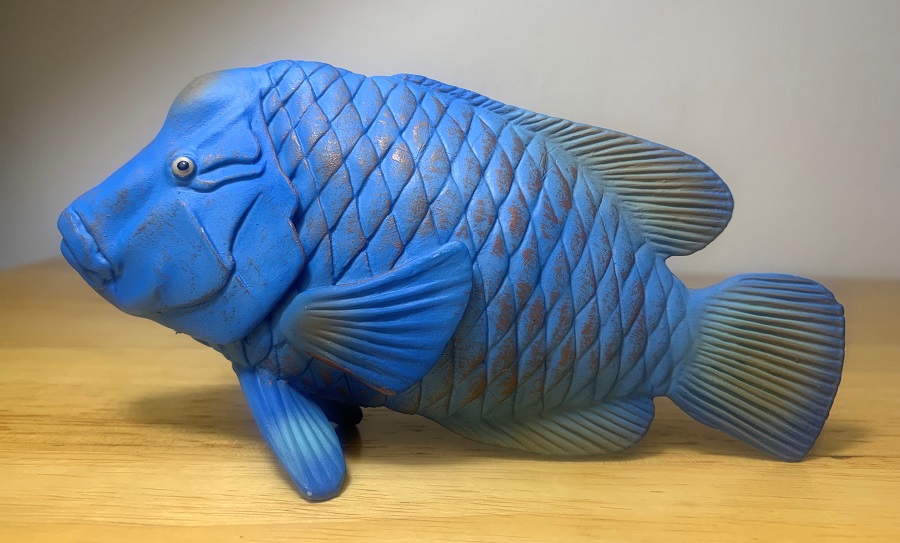
I won’t beat around the bush here. With its blue coloration, deep body, forehead hump, and thick lips, the figure turns out to be a humphead wrasse (Cheilinus undulatus). The humphead wrasse is the largest member of the Labridae (wrasse) family to which the blue groper also belongs. They inhabit coral reefs in the Indo-Pacific where they feed primarily on mollusks, urchins, crustaceans, and small fish. Interestingly, they deal with urchins by picking them up and slamming them against hard surfaces. Humphead wrasses are protogynous hermaphrodites, which means they all start life as female and then change sex to male at about 9 years of age. Due to habitat loss and overfishing the humphead wrasse is listed by the IUCN as endangered.

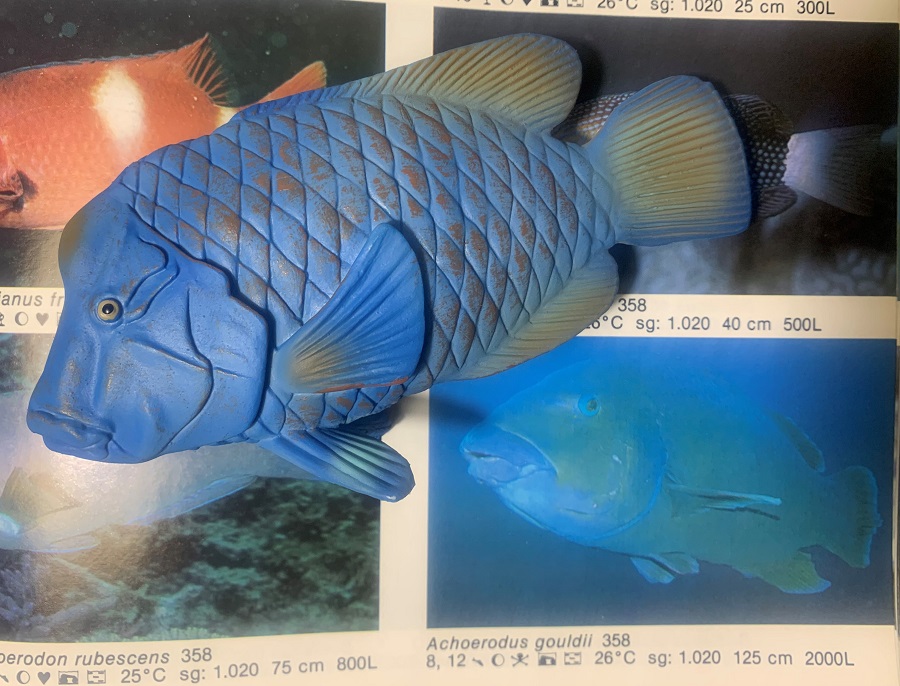
The humphead wrasse can reach a maximum length of 7.5’ (229 cm) but the species reaches an average length of 23” (60 cm). The Mojo figure has a total length of 5.5” (13.97 cm) which puts it at 1/4 in scale for an average individual and about 1/16 for a maximum sized individual.
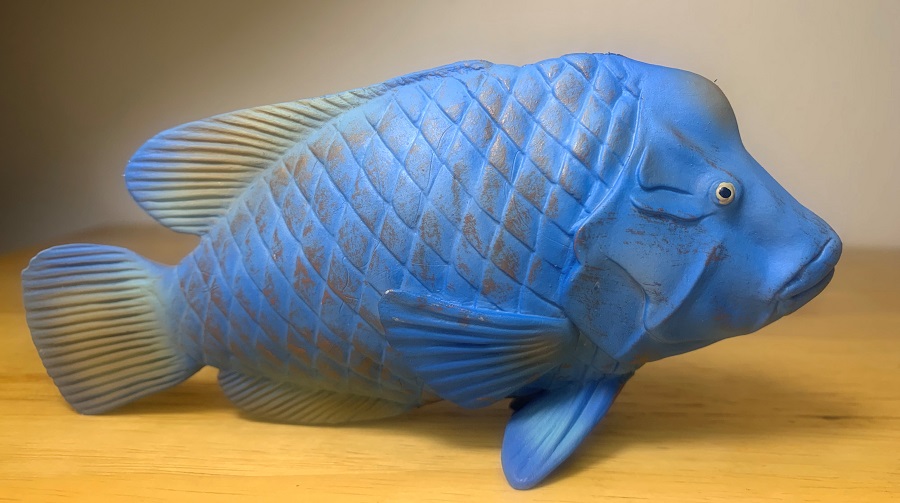
Although the figure is obviously a humphead wrasse it is not a perfect humphead wrasse. No attempt is made to give the fish the correct number of fin rays on the dorsal and anal fins and there are no distinct spiny and soft rays, they’re just generic fins with rays etched into them. The dorsal and anal fins should also be pointed at the tips, but here they’re rounded. The paired fins and caudal fin all look decent enough though, at least in shape. Rays on the caudal fin are just carved straight across the fin instead of radiating out from the tail base. I feel like the face is too gaunt as well, humphead wrasses have a more chubby cheeked appearance. There is also no lateral line.

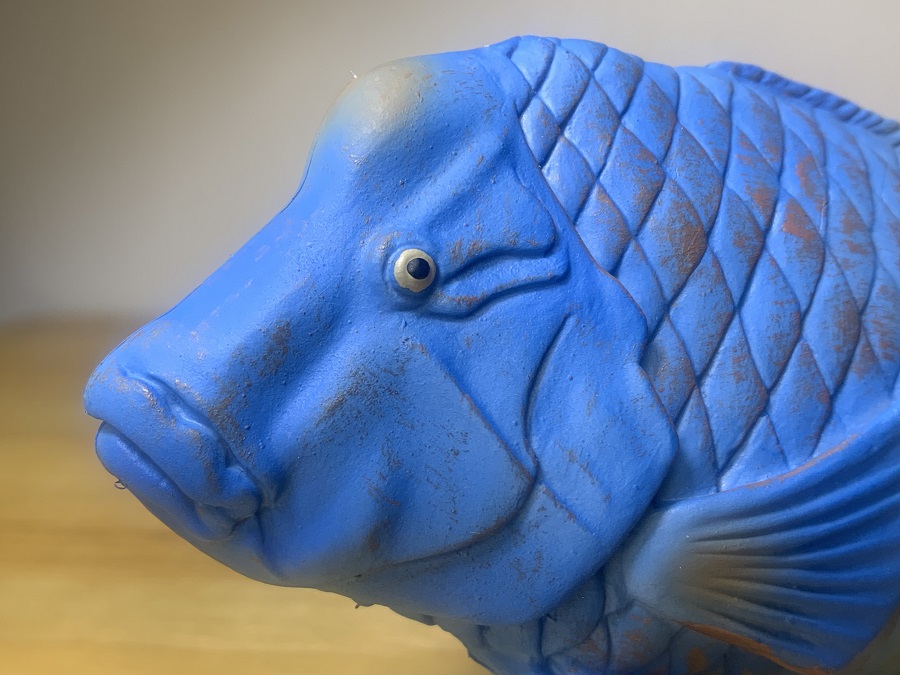
The figure is painted blue with brown accents. Missing are the subtle color details of the actual humphead wrasse, and the figure does little to convey the beauty of the species it represents. Humphead wrasses tend to be more blue-green or olive-green than just blue. What should be a vertical bar on each scale are just brown smudges that look like paint rub-off. Yellow wavy markings that should be on the head are missing, as are the two black stripes that should be extending out from behind the eyes. Come to think of it, the coloration might be a better match for the actual blue groper.
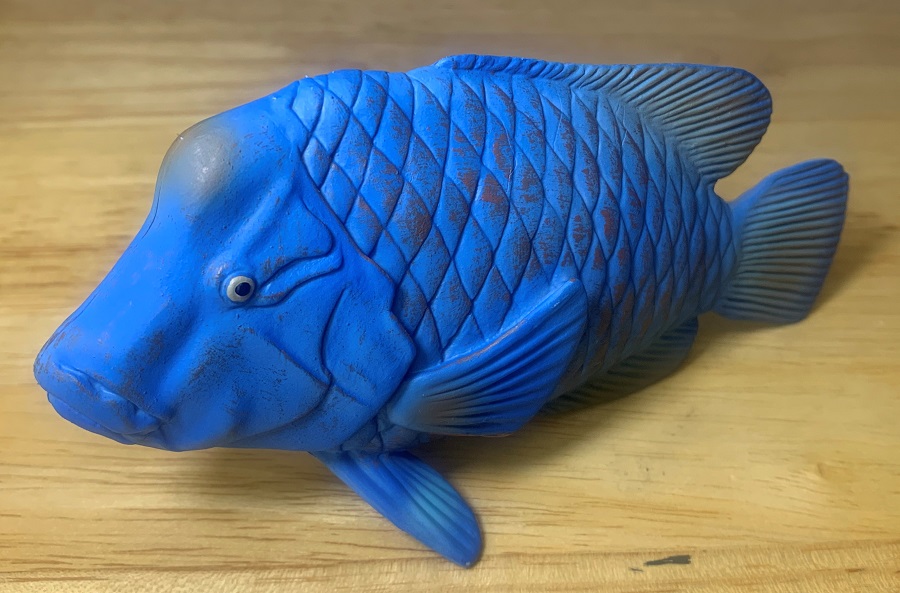
Fish figures from western companies are a rarity that should be treasured but this figure has way too many shortcomings to make it recommendable. I’m hesitant to say it’s a bad figure but it’s only average at best. Other humphead wrasses by Bandai, Favorite, Colorata, Kaiyodo, and Eikoh are all more anatomically accurate than this one with more complex paintjobs. Those are all going to be harder to find and more expensive though. The Mojo “blue groper” is currently in production and retails for about $10.

Disclaimer: links to Ebay and Amazon on the AnimalToyBlog are affiliate links, so we make a small commission if you use them. Thanks for supporting us!




works well as a generic fish toy but as an identification piece, it sucks. Great review as always!
For a plastic toy from a ‘Western’ manufacturer, it’s not bad for a humphead wrasse. I think a lot of the issues stemmed from the initial mislabeling of the intended species.